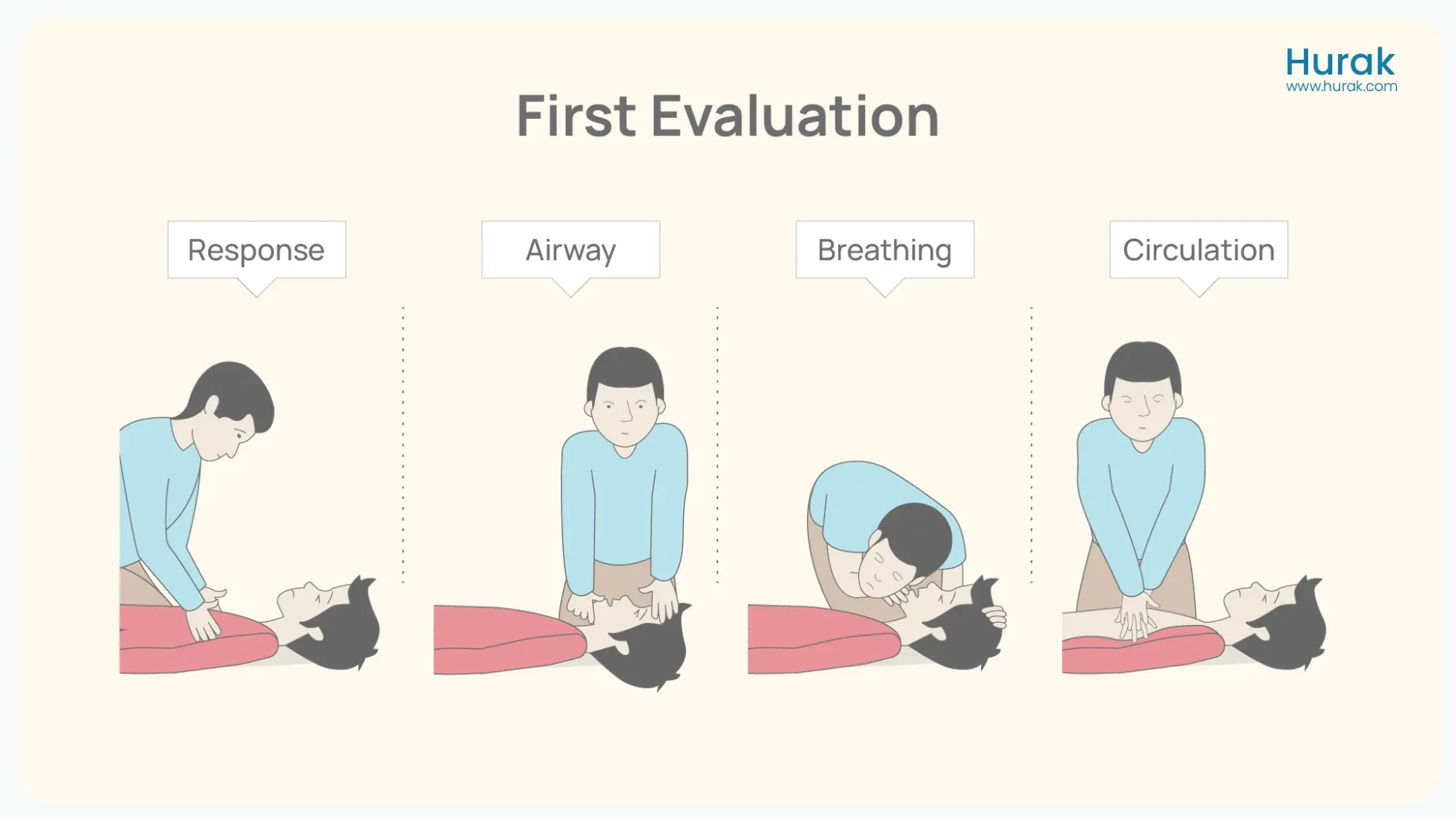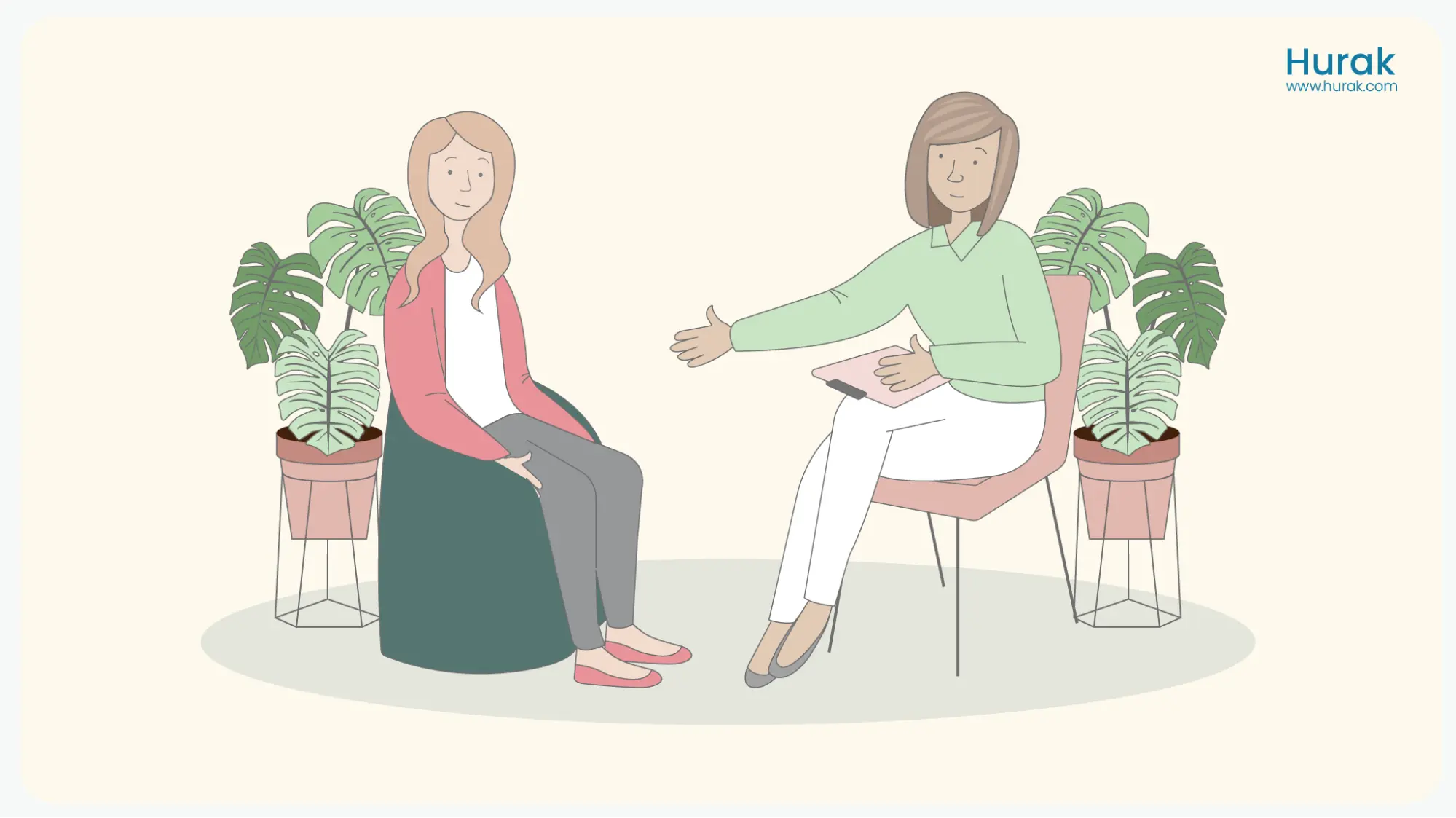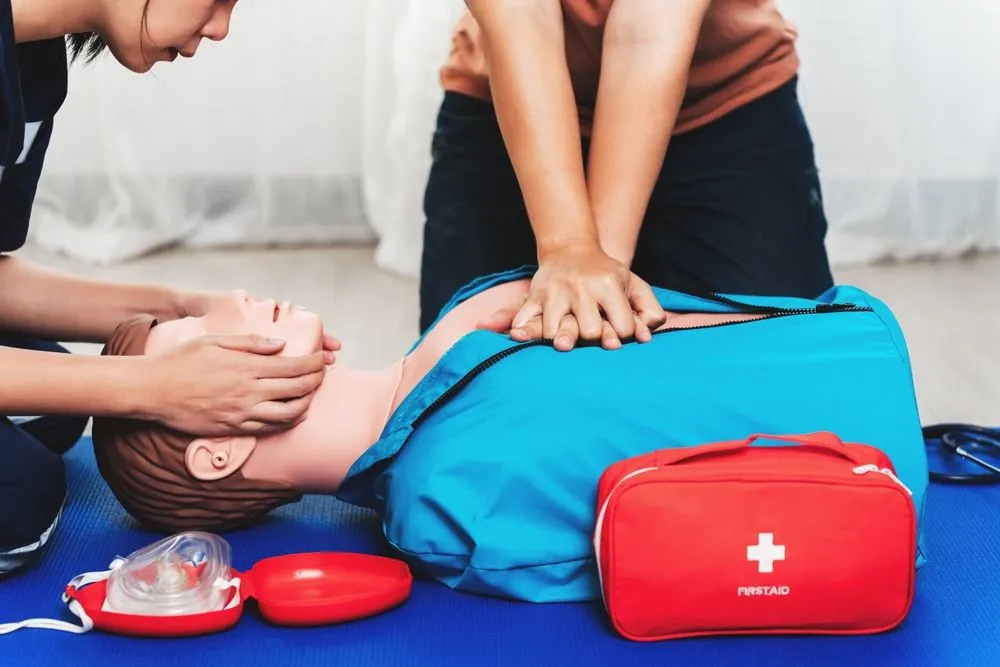Traffic accidents can be small incidents like bicycle accidents or more severe ones like car crashes. It is important to make sure the area is safe before you help anyone who has been hurt. This will keep you, injured people, and other drivers safe.
Once you have confirmed the safety of an area, take a quick look at the people who are hurt. Decide who needs help the most urgently. Always conduct first aid on a casualty who is not breathing before you help anyone else.
Call 999 for emergency help. Inform them about what has happened. This includes information such as:
- The number of people who are hurt
- The age of the injured people
- Are the injuries critical or non-critical?
What To Do If You Witness a Road Accident
If you come across a road accident, a step-by-step method should be followed:
Scene Safety Assessment
When you approach an accident scene, safety comes first. To avoid further injuries, ensure all traffic stops, and everyone knows about the accident.
Keep an eye out for any oncoming traffic that could pose a danger. Check for fuel spillage or fire risks, and turn off car ignitions if possible. Use hazard lights and warning triangles if available.
If there are other people around, ask them to call emergency services. If alone, assess the situation and help anyone with life-threatening injuries first.
Check the Quiet Ones First
Always prioritise checking quiet and motionless individuals first. Check if they are responsive and breathing. If they are unresponsive but breathing, position them to keep their airway clear and keep them warm.
Administer CPR on Unconscious People
If someone is not breathing, you may need to administer CPR. Call an ambulance immediately if you have not already done so. Only move an unconscious person from a vehicle if there is an immediate danger.

Determine the Safety of Conscious People
Conscious casualties should be moved to a safe area and kept warm and calm. Look out for any severe bleeding or life-threatening injuries and treat them first. Monitor anyone trapped in a vehicle and notify emergency services immediately.
Be Careful How and When You Move Them
Only remove a motorcyclist’s helmet if they are unconscious, and it is necessary to assess their breathing. If a casualty is lying on their back unconscious and breathing, roll them into the recovery position with help to avoid twisting their spine.
The Recovery Position:
To place someone in the recovery position, straighten their legs. Remove any glasses or bulky items from their pockets. Position the nearest arm at a right angle to the body, with the palm facing upward. Bring the other arm across the chest. Place the back of the hand against the nearest cheek. Lift the far knee and gently roll them onto their side by pulling on the far leg.
If they are conscious and lying on the road, encourage them to stay still and support their head and neck until help arrives.
Following these steps, you can provide crucial assistance at a road accident scene and help keep everyone safe until professional help arrives.

Ready to Learn More?
Knowing how to conduct first aid in a road accident is important, but there's more to it. Our First Aid courses offer complete training to help you handle critical situations. Whether you want to improve your skills or workplace safety, these courses help build confidence and expertise. View our Emergency First Aid at Work (EFAW) and Level 3 First Aid at Work courses. These courses meet the UK legal requirements and help you keep people safe.
Assessing an Injured Person after a Road Accident
When dealing with someone hurt in a road accident, remember the primary survey DRABC steps: Danger, Response, Airway, Breathing, and Circulation. After assessing the casualty’s danger and response, carry out the ABC steps.
Airway
Responsive
If the person is not responsive, ask them loudly if they are okay. Check if they can open their eyes. If they respond, you can leave them as they are until help arrives.
While you wait, keep checking if they are:
- Awake and alert
- Responding to your voice
- Not responding at all (unconscious)
Unresponsive
If there is no response, gently lay them on their back. Place one hand on their forehead and gently tilt their head back. Lift their chin using two fingers to move the tongue away from the throat. Avoid pushing on the mouth floor, as this can block the airway.
If you suspect a neck injury, use the jaw thrust technique: place your hands on either side of the head. Gently lift their jaw forward and upwards without moving their head.
Breathing
To check if they are breathing:
- Look for their chest rising and falling
- Listen for breathing sounds over their mouth and nose
- Feel their breath against your cheek for 10 seconds
If they are breathing normally, put them in recovery to keep their airway clear.
Gasping or irregular breathing is not normal. If they are not breathing normally, call 999 for an ambulance and start CPR.
Circulation
If their breathing is not normal, start chest compressions immediately. Gasping and irregular breaths after a sudden cardiac arrest are not expected. In this case, administer CPR right away.
If they are not breathing, call 999 for an ambulance and start CPR.
Supporting Those with PTSD After Giving CPR
Performing CPR can be a tough experience for everyone involved. The situations in which you need to perform CPR vary greatly.
For example, you might see a stranger collapse on the street, and you are the only one there to help. Or maybe you have to do CPR on someone you love, even a child.
Even people who have done CPR many times, like paramedics, nurses, and doctors, can find it hard emotionally.
PTSD, which stands for post-traumatic stress disorder, is a type of anxiety disorder that can happen after really scary or stressful events. CPR situations often fit into this category.
It is good to know the signs of PTSD so you can recognise if you or someone else might be dealing with it. Symptoms can last a long time and affect your daily life.
Common PTSD symptoms include:
- Having nightmares or flashbacks of the event.
- Feeling alone or isolated.
- Feeling easily annoyed.
- Feeling guilty.
- Having trouble focusing.
- Having problems sleeping, like not being able to sleep well.
Get Trained in All First-Aid Skills
First Aid Courses
Book NowRated Excellent
on major review sites

Getting the Right Help After a Road Accident
Getting the right help after a traumatic experience such as a road accident is essential. This could mean talking to family, friends, or people you work with. It might also mean getting counselling.
There are online groups and places where you can find support from others who have been through similar things. Sharing experiences can help a lot.
Many charities and groups help with mental health, such as Mind, SANE, or Anxiety UK.
Your doctor (GP) can also give extra help, especially if you feel anxious or restless.

How To Treat Shock After a Road Accident
Accidents, like car crashes, falls, or near-drowning incidents, can often trigger shock. Even if you witnessed the accident, it can still affect you.
Symptoms of Shock
Shock can show up in different ways, like:
- Feeling pumped up with adrenaline.
- Shaking or feeling jittery.
- The feeling of sickness.
- Having a tight chest.
- Finding it hard to think clearly.
- Feeling aggressive or agitated
- Experiencing hallucinations
- Feeling numb
Everyone reacts differently, and there is no right or wrong way to feel after something scary happens.
Supporting Someone in Shock
If someone you know is in shock, here are some things you can do to help:
- Please make sure they are safe and try to keep them calm.
- Help them take slow, deep breaths.
- Please do not ask them to make any big decisions right away.
- Let them know that how they are feeling will pass.
- Help them find ways to manage any pain they might be feeling.
- Explain that adrenaline can hide pain so that they might feel it later.
- Remember, it is important to give yourself time to heal, too. Getting support from friends, family, or professionals can help.
Take care of yourself by staying active, eating well and following a routine. Finding ways to relax can make a big difference during tough times.
Conclusion
Traffic accidents, whether minor or severe, can significantly impact those involved. Confirming safety before offering help at the scene for yourself and others is important. Prioritise first-aid for the most severely injured and call emergency services promptly. Assess the airway, breathing, and circulation of those who are injured. Offer support to those affected by shock or PTSD after the road accident. Taking care of others and yourself after a traumatic event is important for healing and well-being.




